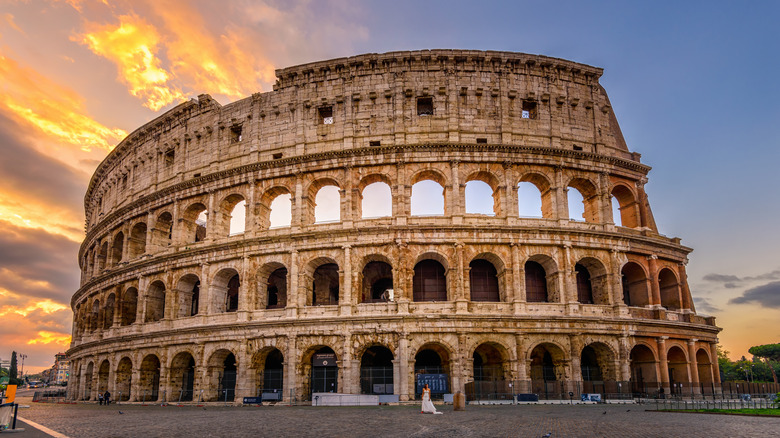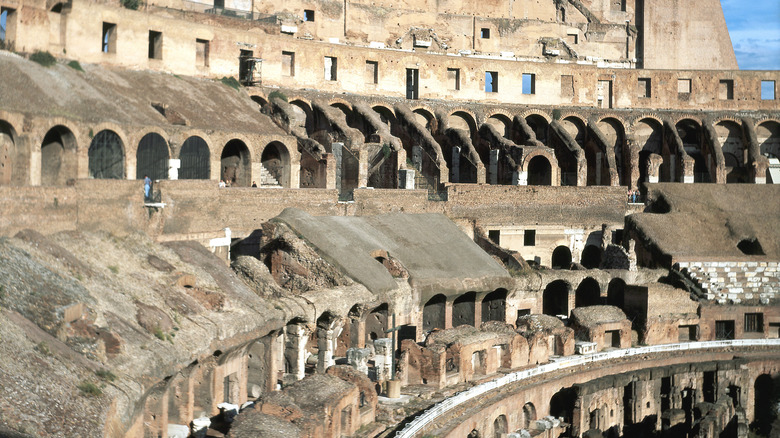The Real Reason The Roman Colosseum Was Abandoned For Centuries
The Roman Colosseum, also called the Flavian Amphitheater, is an enormous stone structure built in A.D. 70. It was commissioned by the Flavian emperors for the Roman citizens, and it accommodated up to 50,000 people at a time. The opening of the amphitheater in A.D. 80 was celebrated with gladiatorial games that lasted for 100 days, according to National Geographic.
The Roman Colosseum hosted several activities including animal hunts and chariot racing. However, it was also used as an execution ground where criminals were beheaded, tortured, thrown to wild beasts, and even forced to fight strong gladiators. Perhaps the most popular event held in the Colosseum is the gladiator fights that were arranged for the entertainment of the Roman people (via Rome City Tour). The Colosseum was actively used for four centuries before it was abandoned. Interest in gladiatorial battles waned, and other forms of entertainment were made available for the Romans. The last gladiator fight took place under the rule of Emperor Honorius, who was in power from A.D. 393 to A.D. 423, according to Tribunes and Triumphs.
The decline of the Roman Colosseum
By the time the Roman Colosseum was abandoned in the sixth century A.D., it had already been damaged due to earthquakes and lightning strikes. It had also been neglected and had deteriorated significantly as a result, according to National Geographic. With the spread of Christianity, Romans' views significantly changed. One significant event triggered the ban of gladiatorial games. In A.D. 404, a monk stepped in between two gladiators who were battling. The large crowd was disgruntled by the disturbance and stoned the monk to death. As a result, Emperor Honorius officially banned gladiatorial combats (via World History). Animal hunts were still held in Colosseum for another century before it was stopped.
The Roman Colosseum became nothing but a gigantic structure when the activities ceased. Throughout the years, some emperors ordered repairs to the damages caused by the environment, but with it came expenditures that the Roman Empire could use elsewhere, per Tribunes and Triumphs.
By the 20th century, the Roman Colosseum has lost about two-thirds of its original structure due to natural disasters and abandonment. Restoration started in the 1990s and today, it remains one of the most popular attractions in Italy that draws more than 4 million tourists from around the world, per The Colosseum.

